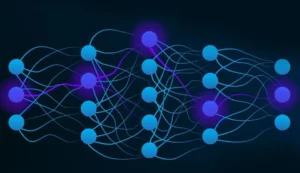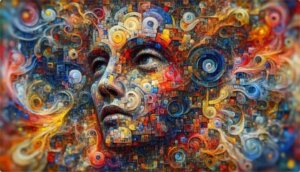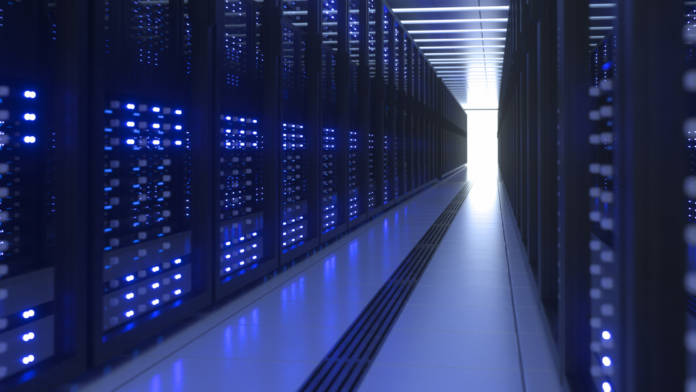In recent years, people are increasingly talking about neural networks. They are actively being introduced into different industries, and every major IT company is trying to release its version. Almost everyone has heard of ChatGPT, Midjourney, Kandinsky, GigaChat, and many others. But still, what is a neural network, and how does it work? Let’s understand this material. Neural networks – what they are and how they work
What is a neural network
To simplify everything as much as possible, a neural network is a computer system that imitates the functioning of the human brain. To do this, it uses many neurons connected. All of them are interconnected and constantly “exchange” information.

The main feature of neural networks is that they do not operate according to pre-written rules but compose all the algorithms independently. This is not about manifesting one’s thinking but about constant learning based on a huge amount of data and rapid adaptation to new tasks.
How do neural networks work?
To speed up and simplify the work of neural networks, all “neurons” are divided into three layers:
- Input layer;
- Hidden layers;
- Output layer.

All the “magic” happens as follows: the input layer receives the request and analyzes the received information down to the last letter or pixel.
Hidden layers process data and convert it into mathematical numerical codes. There can be as many of them as you like, and the number depends only on the amount of information and the complexity of the tasks. This is where most of the work occurs, from sorting and selecting to sketching and filling in voids.
The output layer collects the finished image or text, improves the quality, and displays it to the user. The more accurate and detailed the request, the faster and better the result.
How neural networks learn
Neural networks learn to recognize what is what by passing through and analyzing a vast amount of data called a dataset. The more terabytes are studied and processed, the more attempts are given to complete the task, and the faster and more accurately the request is executed. The entire process can take place either using specified algorithms or based on previous experience.

There are usually three approaches to training neural networks:
- The neural network constantly learns itself. Deep type, built on the fact that the network divides objects into groups, subgroups, classes, based on answers stored in memory;
- The training of the neural network is controlled. The result of the neural network is constantly compared with the standard, and the algorithms will be rebuilt until the desired result is obtained.
- The neural network learns itself, but the environment changes to participate in this.
Thanks to this, the networks “remember” many different ways to solve a problem, and begin to “think” creatively.
Classification of neural networks
There are many classifications of neural networks according to various parameters and characteristics. Thus, according to the characteristics of their work, we can distinguish single-layer and multi-layer ones – the first answers the request faster, and the second is more accurate.

Based on the direction of information dissemination, there are direct distribution networks (sent a request and received a response) and recurrent ones, capable of remembering a chain of data, predicting the future, and supplementing and restoring missing fragments.
According to the tasks performed, perceptrons (designed to process numerical data), convolutional (work with pictures), and generative (create texts, images, and other content) are noted. They also classify homogeneous and hybrid networks, learning and self-learning, analog, binary, or symbolic. These are just the main types, and there are many of them.
Using neural networks
In the modern world, neural networks are actively used in various fields and areas. They help analyze vast amounts of data, recognize patterns, predict, compare, classify, process, and more. As an example, here are some of the most obvious options:
- Neural networks built into browser search engines that help find answers to user queries;
- Voice assistants in various services, for example in banks;
- Social networking algorithms that analyze user activity and select appropriate content;
- A neurochip built into smartphones that selects the necessary camera settings and filters depending on what or who is being filmed, and allows you to instantly process photos and videos;
- Face ID in phones, which “studies” the digital model of the owner’s face in order to recognize him at any time of the day and in any weather;
- Medical equipment based on neural networks helps study tests, ECG, ultrasound, X-rays for more accurate diagnosis of diseases;
- Neural networks are actively used in game development, from drawing scenery and composing animations to writing dialogues.
- ChatGPT helps translate texts, write codes and even dissertations.
Neural networks are used more often; these examples are the first to come to mind.
The future of neural networks
The future of neural networks has become the subject of heated debate. The most pessimistic believe that soon, because of them, some types of professions will disappear, and many will find themselves unemployed, for example, artists or translators.

More optimistic people suggest they will never be able to displace living people. In addition, this will lead to the emergence of new specialists who can work with neural networks as efficiently as possible, for example, enter the most accurate queries to obtain a specific result.
Neural networks will take on more and more tasks that were previously considered human. Every year, they will be increasingly implemented in various areas, making life easier for many users.
Also Read: Top 6 modern neural networks for creating animation


